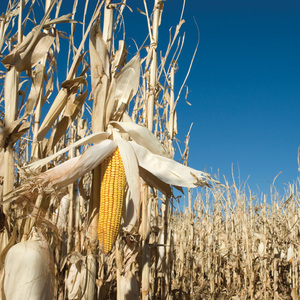USDA increases forecast for 2021-'22 corn use in ethanol

April 8, 2022
BY Erin Krueger
The USDA increased its forecast for 2021-’22 corn use in ethanol in its latest World Agricultural Supply and Demand Estimates report, released April 8. Ending stocks were unchanged and the season-average farm price was increased.
The USDA has lowered its forecast for feed and residual use by 25 million bushels to 5.625 billion based on indicated disappearance during the December-February quarter.
Advertisement
Advertisement
The forecast for corn use in ethanol is raised 25 million bushels to 5.375 billion bushels based on the most recent data from the agency’s Grain Crushings and Co-Products Production report and the pace of weekly ethanol production during March as indicated by U.S. Energy Information Administration data. Approximately 5.033 billion bushels of corn went to ethanol production in 2020-’21, up from 4.857 billion bushels in 2019-’20.
With offsetting use changes, ending stocks are unchanged at 1.44 billion bushels. The season-average farm price is raised 15 cents to $5.80 per bushel based on observed prices to date.
Advertisement
Advertisement
Foreign corn production is forecast higher with increases for Brazil, Indonesia, Pakistan and the EU. For Brazil, production is raised reflecting increased areas; yield expectations are essentially unchanged this month as much of the second crop will enter the critical phase of development during April. Indonesia corn production is higher as greater area more than offsets a slight reduction to yield. Corn production is raised for the EU, mostly reflecting increases for Germany, Romania and the Czech Republic.
Major global trade changes include lower forecast corn exports for Ukraine, Serbia, and Paraguay, with increases for Brazil, Canada, and India. Corn imports are lowered for China, Chile, and Bangladesh, but raised for Iran. Foreign corn ending stocks are higher, mostly reflecting increases for Ukraine, Serbia, the EU, and Indonesia that are partly offset by a reduction for Canada. Global corn ending stocks, at 305.5 million tons, are up 4.5 million from last month.
Related Stories
The U.S. EPA on July 8 hosted virtual public hearing to gather input on the agency’s recently released proposed rule to set 2026 and 2027 RFS RVOs. Members of the biofuel industry were among those to offer testimony during the event.
The USDA’s Risk Management Agency is implementing multiple changes to the Camelina pilot insurance program for the 2026 and succeeding crop years. The changes will expand coverage options and provide greater flexibility for producers.
The USDA’s National Agricultural Statistics Service on June 30 released its annual Acreage report, estimating that 83.4 million acres of soybeans have been planted in the U.S. this year, down 4% when compared to 2024.
SAF Magazine and the Commercial Aviation Alternative Fuels Initiative announced the preliminary agenda for the North American SAF Conference and Expo, being held Sept. 22-24 at the Minneapolis Convention Center in Minneapolis, Minnesota.
Scientists at ORNL have developed a first-ever method of detecting ribonucleic acid, or RNA, inside plant cells using a technique that results in a visible fluorescent signal. The technology could help develop hardier bioenergy and food crops.
Upcoming Events










